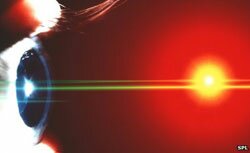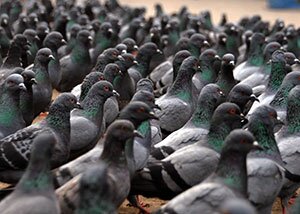
A possible chemical leak aboard the International Space Station gave a brief scare after an otherwise flawless Shuttle Atlantis mission, due to wind up Wednesday. The incident came a day after the six Atlantis astronauts left the station following the first ISS construction mission since the 2003 Columbia shuttle disaster, and two days before the arrival of a Russian Soyuz rocket carrying the first woman space tourist and two professional astronauts.
The orbiting laboratory\'s ventilation system was shut down and the three ISS occupants put on surgical masks and gloves after a bad odor alerted them to a possible leak. Space station manager Mike Suffredini said the ISS\'s Russian, German and American crew members smelled what appeared to be potassium hydroxide (KOH).
\"It\'s an irritant, it\'s not a life-threatening material, and at no time did the crew have to put on the gas mask or the oxygen mask,\" he said. \"However we did have them wearing some surgical gloves and masks.\"
The crew initially reported light smoke and an odor of potassium hydroxide coming out of an oxygen vent on the Russian section of the space lab, he said. \"There is no more smoke, just a smell, the situation is stable,\" ISS astronaut Jeff Williams of the United States later told NASA\'s mission control.
Suffredini said the incident will not delay Wednesday\'s scheduled docking of the Soyuz rocket that left Kazakhstan earlier Monday, carrying Iranian-born US citizen and millionaire tourist Anousheh Ansari, NASA\'s Michael Lopez-Alegria and Russian cosmonaut Mikhail Tyurin.
As the ISS underwent emergency procedures, Atlantis was 74 kilometers (46 miles) from the space station as its crew scanned the shuttle\'s heat shield for potential damage from micrometeorites.
The astronauts used a camera at the end of the orbiter\'s robotic arm to check the orbiter\'s nose cap and wing leading edges. The shuttle remained close to the ISS in case it is forced to return due to damage.
Shuttle flight director Paul Dye said he had not seen any problems. \"The only thing obvious was that everything was very good,\" Dye said. Analysts will pore over the data during the next 24 hours before mission managers can give Atlantis the green light to land in Cape Canaveral, Florida on Wednesday.
The procedure is part of new safety measures created after the Columbia accident, which was caused by a crack on the shuttle\'s heat shield that led to its disintegration as it returned to Earth in February 2003.
Atlantis was already cleared from damage that could have been caused by debris during liftoff. Columbia was doomed by foam insulation that peeled off its external fuel tank during its launch and pierced its heat shield.
The five men and one woman of the Atlantis crew arrived at the space station on September 11 to install the first addition to the half-finished ISS since November 2002.
The astronauts used the station\'s Canadian-made robotic arm to attach the 16-tonne truss segment with two solar arrays, and spacewalkers set up the system, which will double the ISS\'s power capabilities.
The National Aeronautics and Space Administration hailed the resumption of the construction work as a success.
NASA plans 15 more flights to complete construction of the ISS by 2010, when the three-shuttle fleet is to be retired.
The Atlantis mission was the third shuttle flight since the Columbia accident that left seven astronauts dead. The last two missions aboard the Discovery shuttle, in 2005 and in July, were aimed at improving safety.
The orbiting laboratory\'s ventilation system was shut down and the three ISS occupants put on surgical masks and gloves after a bad odor alerted them to a possible leak. Space station manager Mike Suffredini said the ISS\'s Russian, German and American crew members smelled what appeared to be potassium hydroxide (KOH).
\"It\'s an irritant, it\'s not a life-threatening material, and at no time did the crew have to put on the gas mask or the oxygen mask,\" he said. \"However we did have them wearing some surgical gloves and masks.\"
The crew initially reported light smoke and an odor of potassium hydroxide coming out of an oxygen vent on the Russian section of the space lab, he said. \"There is no more smoke, just a smell, the situation is stable,\" ISS astronaut Jeff Williams of the United States later told NASA\'s mission control.
Suffredini said the incident will not delay Wednesday\'s scheduled docking of the Soyuz rocket that left Kazakhstan earlier Monday, carrying Iranian-born US citizen and millionaire tourist Anousheh Ansari, NASA\'s Michael Lopez-Alegria and Russian cosmonaut Mikhail Tyurin.
As the ISS underwent emergency procedures, Atlantis was 74 kilometers (46 miles) from the space station as its crew scanned the shuttle\'s heat shield for potential damage from micrometeorites.
The astronauts used a camera at the end of the orbiter\'s robotic arm to check the orbiter\'s nose cap and wing leading edges. The shuttle remained close to the ISS in case it is forced to return due to damage.
Shuttle flight director Paul Dye said he had not seen any problems. \"The only thing obvious was that everything was very good,\" Dye said. Analysts will pore over the data during the next 24 hours before mission managers can give Atlantis the green light to land in Cape Canaveral, Florida on Wednesday.
The procedure is part of new safety measures created after the Columbia accident, which was caused by a crack on the shuttle\'s heat shield that led to its disintegration as it returned to Earth in February 2003.
Atlantis was already cleared from damage that could have been caused by debris during liftoff. Columbia was doomed by foam insulation that peeled off its external fuel tank during its launch and pierced its heat shield.
The five men and one woman of the Atlantis crew arrived at the space station on September 11 to install the first addition to the half-finished ISS since November 2002.
The astronauts used the station\'s Canadian-made robotic arm to attach the 16-tonne truss segment with two solar arrays, and spacewalkers set up the system, which will double the ISS\'s power capabilities.
The National Aeronautics and Space Administration hailed the resumption of the construction work as a success.
NASA plans 15 more flights to complete construction of the ISS by 2010, when the three-shuttle fleet is to be retired.
The Atlantis mission was the third shuttle flight since the Columbia accident that left seven astronauts dead. The last two missions aboard the Discovery shuttle, in 2005 and in July, were aimed at improving safety.












